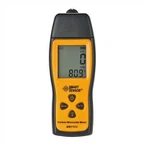Introduction to the different types of CAN frames on an oscilloscope
With the increasing number of electronic devices in automobiles, the use of serial buses to achieve multiple transmissions to form an automotive electronic network is a reliable and economical practice.
In the initial traditional automotive circuits, the powertrain modules and body modules were connected point-to-point, so that the wiring would become increasingly complex, and the increase in wiring would also lead to an increase in the failure rate of the car.
Later CAN bus is used more and more widely in automobiles. The so-called multiplexing refers to a way of mixing or cross-transmitting a variety of information over a single communication channel in a computer local area network (LAN). A network with multiplexing allows multiple computers to access it simultaneously.
CAN (multiplexing technology) applied to automobiles allows for more simplified wiring, lower costs, easier and faster communication between electronic control units, fewer sensors, and sharing of information resources.
Multiplexing communication networks are used in multi-module operating systems. Modules are connected to each other by ordinary twisted pair wires and use data link jacks as diagnostic interfaces. Information is exchanged in a manner similar to that of a shared telephone line, and the modules communicate with each other using messages and specialised corporate standard protocols. Messages relate to control, status or diagnostic information and operating parameters. Twisted pair cables have the advantage of providing redundancy, i.e. in the event of an outage on one line, the system operation can be ensured by the other line. Also, twisted pair reduces the amount of electronic interference from the outside world to the multiplexed communication network, as well as the electronic interference generated by the multiplexed communication network itself.
Let's look at how to use an oscilloscope to measure the CAN bus signal of the car, first find the car's OBD interface
Let's take a look at the interface pin definition:
4. body ground 5. signal ground 6. CAN high (ISO 15765-4)
14.CAN low (ISO 15765-4) 16.Battery voltage
3.CAN high (spare) 11.CAN low (spare)
Connect oscilloscope channels 1 and 2 to BNC to banana head wires, with the black banana head connected to an alligator clip and connected to pin 4 ground. Channel 1 is connected to PIN 6 (CAN_H) of the OBD, and channel 2 is connected to PIN 14 (CAN_L) of the OBD. Open the oscilloscope decode menu for CAN bus configuration. Adjust the bus threshold level to get the decoded data, set the trigger mode as decoding trigger, and the data frame ID to stabilise the waveform. Adjust the vertical gear and time base to observe the signal.
As above is the normal waveform of CAN-BUS, CAN-H and CAN-L waveforms are the same, but with opposite polarity.






